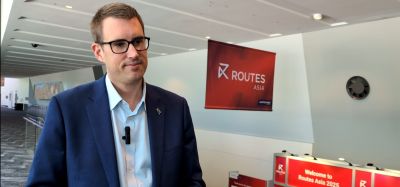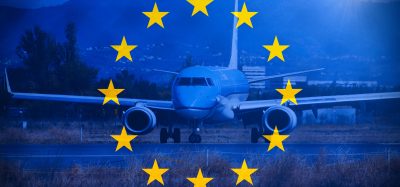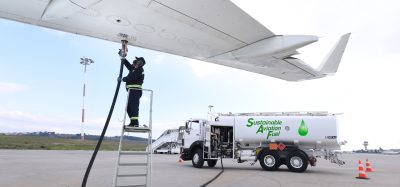Alternative fuels for aviation: the CAAFI process
- Like
- Digg
- Del
- Tumblr
- VKontakte
- Buffer
- Love This
- Odnoklassniki
- Meneame
- Blogger
- Amazon
- Yahoo Mail
- Gmail
- AOL
- Newsvine
- HackerNews
- Evernote
- MySpace
- Mail.ru
- Viadeo
- Line
- Comments
- Yummly
- SMS
- Viber
- Telegram
- Subscribe
- Skype
- Facebook Messenger
- Kakao
- LiveJournal
- Yammer
- Edgar
- Fintel
- Mix
- Instapaper
- Copy Link
Posted: 30 November 2007 | Richard L. Altman, Executive Director, Commercial Aviation Alternative Fuels Initiative (CAAFI) | No comments yet
Until the last few years, alternatives to jet petroleum based aviation fuel for commercial aircraft were, at best, an afterthought to energy suppliers and the aviation industry. The collective wisdom of airlines, airports, aircraft manufacturers and government organisations such as the FAA in the US, had been that aviation would consume the last drop of oil used in transportation and that all other transportation modes would switch to alternatives first. They predicted that the transition would occur long after stationary energy users (utilities) switched. Even if aviation sought to pursue alternatives to Jet A or its military equivalent JP8, the market for aviation fuel (less than 10% of overall demand) was too small to influence energy suppliers and distributors. The need to pursue alternatives in aviation was not apparent.
Until the last few years, alternatives to jet petroleum based aviation fuel for commercial aircraft were, at best, an afterthought to energy suppliers and the aviation industry. The collective wisdom of airlines, airports, aircraft manufacturers and government organisations such as the FAA in the US, had been that aviation would consume the last drop of oil used in transportation and that all other transportation modes would switch to alternatives first. They predicted that the transition would occur long after stationary energy users (utilities) switched. Even if aviation sought to pursue alternatives to Jet A or its military equivalent JP8, the market for aviation fuel (less than 10% of overall demand) was too small to influence energy suppliers and distributors. The need to pursue alternatives in aviation was not apparent.
Much has changed and a different set of questions are asked in many quarters. Does aviation want to rely upon this historical assumption of “last user”? Is there a better future possible with a more secure supply, a better environmental footprint? Could this lead to energy price stability in the long term? Is there any way that aviation could attract the attention of the energy supply community to act in its interests? Perhaps most importantly, if aviation does not act, what are the consequences of being the last user of an ageing and likely politically unstable petroleum infrastructure in the long term?
Following initial steps by the United States Air Force, which had already begun to address some of these questions, commercial aviation interests are now acting. Clear goals for research and certification of alternative fuels to aviation requirements have been set, along with efficient means of delivering to those goals. The environmental characteristics of these fuels are being examined. Local air quality implications, that airports and communities must comply to, are being examined, in addition to headline greenhouse gas emissions. Economic factors of production and distribution are being scrutinised to ensure that infrastructure can be developed around aviation needs in a timely manner.
Data in these areas is being gathered and communicated throughout the compact, technically astute and knowledge driven aviation supply chain and much of this data is being documented in the form of roadmaps. In this manner, airlines, airports, manufacturers, energy suppliers, distributors, university researchers and government funding sources, have a single data source. They can then reach a common understanding of the needs and solution paths.
A major catalyst and focal point for this metamorphosis in the US is the Commercial Aviation Alternative Fuels Initiative (CAAFI) process. The genesis, growth and accomplishments of aviation alternative fuels and the CAAFI process are important for airport operators to understand. The ability of individual airports to grow going forward, may depend as much on the availability of a reliable, clean, reasonably priced fuel supply as any other factor.
CAAFI Genesis
Modern alternative fuels research began in the jet age with a small, but dedicated, group of chemists and chemical engineers at the equipment manufacturers and major energy companies in the 1970’s. It was during this period that the spectre of fuel shortages (oil shocks), were first manifested. Intense seeding of what has become the CAAFI process, in the 2005 time period outside the fuel lab, was propelled by a series of seemingly unrelated events.
In 2005 the consequences of supply disruption, headlined by the effects of hurricane Katrina in August, occurred concurrently with a large increase in base fuel prices. The end result was that, for the first time in history, fuel had become the single largest component of airline costs exceeding labour. Beyond the prices themselves, was the fact that crack spreads for aviation fuels had tripled and volatility of this ever-larger component of cost had further increased the uncertainty.
Even prior to Katrina, the FAA’s Environment and Energy board had been prompted by its advisory board to fund activities identifying prospects for alternative aviation fuels. Importantly, that core group of industry researchers had implemented procedural protocols that would permit dramatic reductions in the time and cost to approve alternative fuels to the aviation ASTM D-1655 specification. Prospects of a 10-year lead-time prior to fuel approval, a major deterrent to energy company investment, had been shrunk by a factor of three.
Of seemingly less importance at the time was evidence being accumulated, that the fuels from non-renewable sources (natural gas and Coal) could yield a fuel that was significantly cleaner burning from an environmental perspective locally. Measurements of small particles (PM 2.5), the subject of new National Ambient Air Quality Standards (NAAQS), are reduced by 50% to 90% in early engine tests. In addition the fuel such as Gas to Liquid, Syntroleum and Coal to Liquid blends, flown in South Africa (Sasol), were free of sulphur and thus within for ground equipment usage. Technically it was becoming possible that the number of fuels used at airports could be reduced.
Clearly the spotlight had been turned on. The focus was to sharpen substantially as 2006 dawned.
Interest developed well beyond the fuel labs, to include a broad range of aviation, environmental and business leadership. The need to unify commercial aviation, with over 85% of the market for jet fuel, with the more focused but less market intensive Air Force initiative, to capture supplier interest was clear.
CAAFI’s incubator was the Transportation Research Board Committee on the effects of aviation on the environment. It is here where the airlines, airports, manufacturers and the FAA, come together to inform decisions on new and emerging issues. Following a January session chaired by FAA Environment Office’s Chief Scientist, Dr. Lourdes Maurice, it was aptly named “Gas Pains”. The sessions featured Air Force, engine and aircraft company speakers and the synergy between the entities was evident to all. To many who participated, it was time to challenge the prevailing view of aviation’s role in alternative fuels.
A May 2006 Seattle meeting, hosted by Boeing, was the precursor of what was to become CAAFI later that year. Following the May meeting, a mission for what was to become CAAFI was formed. It was agreed that four teams; R&D, Certification/Qualification, Environmental & Business/Economics, would be created with the intent that each should be formed to benchmark status and to identify gaps in research outcomes or business. It was agreed that the data would be developed and communicated in the form of roadmaps for each of the teams. FAA and NASA researchers initiated funding of programmes, to complement an increasingly robust Air Force research plan.
In October 2006, 80 aviation and energy specialists in each of the CAAFI focus areas met at Georgia Tech University. The process had attracted representatives of 7 government agencies, 8 foreign countries and 10 universities, comprised largely of members of the FAA’s MIT led PARTNER Centre of Excellence. Roadmaps were developed and specific tasks defined. Finally, the name Commercial Aviation Alternative Fuels Initiative (CAAFI) was adopted. A password protected – members only website was formed to expedite communications and the genesis phase was complete. Execution was quick to follow.
Alternative fuel accomplishments during CAAFI’s first year
During CAAFI’s brief lifespan, significant developments have occurred in all four functional areas on which CAAFI focuses.
These developments have warranted commercial aviation to see itself as a full partner of the Air Force in alternative fuel developments. Acknowledgement of this partnership is evidenced by joint appearances for the FAA Administrator and Air Force Secretary, at events ranging from the industry seminars to major air shows.
In a joint appearance with Air Force Secretary Michael Wynne at the 2007 Paris Air Show, FAA Administrator Marion Blakey stated the significance of CAAFI succinctly. “CAAFI brings together manufacturers, airlines, airports, the Department of Defence, the Department of Energy and the Environmental Protection Agency and puts them all at the same table. When you get that kind of firepower together and you start to explore, good things happen”.
As a catalyst, the CAAFI process is not executing these developments. In some cases, it is merely the source of encouragement and broadened communication to media outlets and industry events. In other cases, specific proposals developed at CAAFI meetings by CAAFI sponsors and stakeholders are being implemented.
Top-level dialogue is supported by notable achievements. By function, the key outcomes have been:
Certification / Qualification
- Completed testing of 50/50 Gas to liquid (GTL) blends (Syntroleum) and 100% Coal to Liquid (CTL – Sasol)
- Broadening streamlined OEM specification methodology to include all ASTM required approvals to reduce time to certification/qualification
- Adopted Generic goal for all Iso-paraffinic (IPK) fuels (of which Syntroleum and Sasol are individual cases for year end 2008
- Adopted 2010 goal for 100% IPK certification
- Adopted 2013 goal for Bio-fuels certification (predicated on success of current R&D initiatives at the end of 2008
- Linked CAAFI Cert / Qual. with new office at Air Force – goal is single aviation fuel
R&D
- Increased work on bio-fuel options to include building the knowledge base on bio fuels ranging from plant oils to algae
- Put into place several additional flight test demonstrations of bio-fuels
- Illustrated that IPK blends having as little as 20% Biofuel content could be carbon neutral
Environmental
- Funded or funding in place for emissions measurements with both IPK fuels (100% Sasol) and bio fuels for local air quality benefits
- Completed study of parametric life cycle benefits, of a broad variety of feedstocks and processes via the MIT led PARTNER Centre of Excellence
- Linking study results to existing airport emissions calculations models (EVMS) used in airport planning
Business & Economics
- Submitted problem statement for Airport Cooperative Research Programme (ACRP) project to develop a handbook that allows the calculation of environmental and economic benefits/costs for alternative fuels
- Submitted a “synthesis project” statement to benchmark existing fuel supply systems at all airports
- Networked airline industry users to candidate production sources
CAAFI has represented its sponsors in providing testimony on behalf of its airline, airport and manufacturer sponsors. Increasingly, Government programme sponsors in the Administration and Congress to establish where to effectively invest, look to CAAFI roadmaps.
CAAFI’s Future – What it will provide to airports
CAAFI entered its second annual meeting with the clear understanding that airports stand at the centre, between a variety of candidate fuel producers and the concentrated delivery system that flows through airports to the airlines that serve them. If commercial aviation is to be a “first mover” to introduce alternative fuels, airports must be a key player with well-understood business opportunities.
- First, assessment of the economics and environmental impacts of alternative fuels to airports must be easily analysed and quantified. The alternative fuels handbook, scheduled to be executed under ACRP Project ACRP 02-07, is targeted for availability in approximately 18 months.
Can the availability of a single low sulphur fuel, that can be used in both aircraft and GSE, produce economic gain?
How will reductions of particle emissions by as much as 50% allow growth in airports constrained by the clean air acts required actions?
These are two of the key questions that will be answered.
- Second, in the US and globally, those who serve airports must truly understand which facilities will economically benefit from the availability of alternatives.
Execution of the proposed ACRP synthesis project will be a major step. - Third, the significance of tax policies that result in dramatic differences in taxation between GSE fuels and aircraft fuels, must be understood and addressed through informed policy making as needed, to eliminate disincentives for common fuel use.
- Lastly, will airports seek to invest in fuel infrastructure given a long list of other priorities? Much may hinge on whether funding will be allowed to permit airports to supply excess fuel off airport.
All of these issues will be in play at the distribution subset of CAAFI’s business and economics team and at its environmental team.
Will aviation be the last to wean itself from petroleum fuel, or will it be a “first mover” to a very different future? Ultimately, CAAFI and its airport participants will play a key role in answering that question.
About the author
Rich Altman is a founding member and presently serves as Executive Director of the Commercial Aviation Alternative Fuels Initiative (CAAFI).
Rich is a 40 year aviation Industry veteran. 39 of those years were spent with United Technologies, Pratt & Whitney, where he launched his career as a propulsion engineer, opened the commercial engine function in UTC’s Washington D.C. Office and branched into advanced technology and business development.
He is a founding member of the National Academy of Sciences (NAS), Transportation Research Board (TRB) Committee on Aviation and the Environment which gave birth to CAAFI in the 05’/06 time period. He is the author of the committee’s Critical Issues paper on Technology Deployment and a forthcoming paper on Alternative Fuels.
Rich holds Engineering Degrees from the Brooklyn and Rennselaer Polytechnic Institutes and an MBA from the University of Connecticut.

















